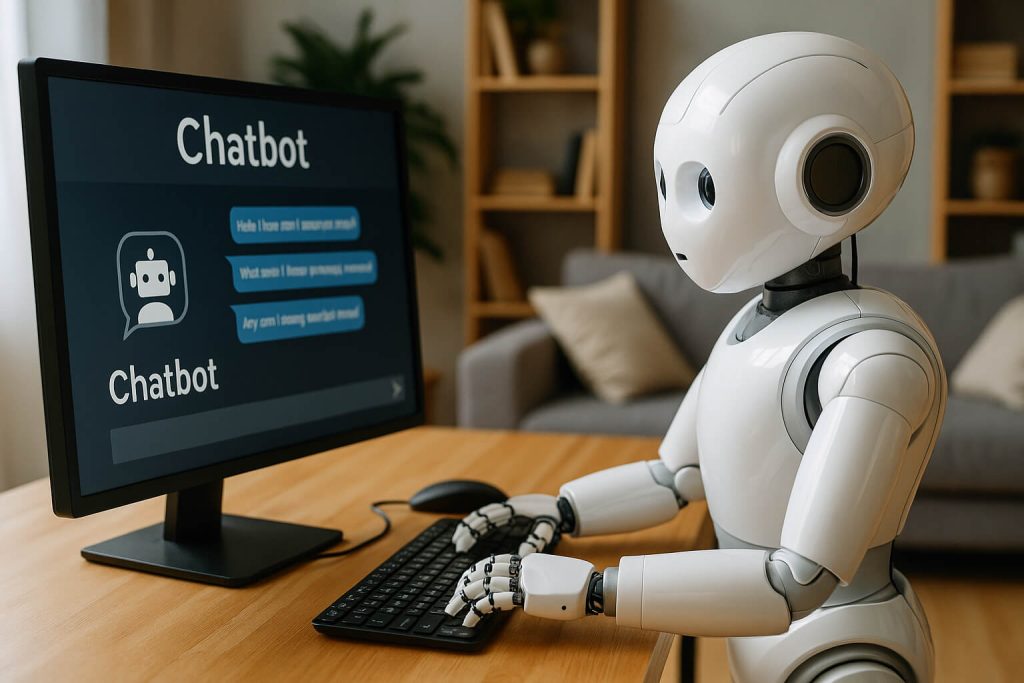Most chatbots today still feel robotic, reactive, limited, and easy to break. But in 2025, that’s no longer acceptable. Developers are expected to build chat experiences that feel intuitive, contextual, and aligned with user goals. And the key to that shift is ownership, owning the data, the tone, and the logic behind your assistant.
That’s exactly what CustomGPT unlocks. You don’t just train a bot ,you define its brain. Whether it’s for onboarding, support, or internal tools, you build an assistant that truly knows your system. And the best part? You can launch it in hours, not weeks.
This article walks through the steps from sourcing your data to embedding the final product. If you’re ready to stop coding lifeless bots and start crafting intelligent copilots, you’re in the right place.
Building an AI chatbot used to mean hardcoding logic or relying on inflexible APIs. But in 2025, full-stack developers are expected to go further, not just ship products, but craft intelligent assistants that scale insight and cut repetitive queries.
That’s where CustomGPT comes in. It lets you build chatbots that don’t just answer, they understand. Think onboarding agents that know your product. Or internal bots that navigate documentation faster than a junior dev.
Don’t code a chatbot. Architect an intelligent support layer,in hours, not weeks.
Use cases that stand out:
- Automate technical onboarding for new team members
- Embed product support into your web app with real-time accuracy
- Create AI agents for dev documentation queries
1. How to build your first smart chatbot with customgpt?
Step 1 : Choose your knowledge base
Pick the source of truth: a Notion doc, your public site, markdown files, GitHub wiki, or even customer support logs. CustomGPT will turn this into a structured brain for your chatbot.
Step 2 : Upload & structure
Feed your documents to CustomGPT. You’ll have options to segment content, define sections, and exclude irrelevant parts. It’s not about quantity — it’s about clean, retrievable logic.
Step 3 : Set personality & guardrails
CustomGPT lets you assign tone, context length, fallback logic, and even define what your bot won’t say. That’s where you shift from “chatbot” to “assistant”.
Step 4 : Test, embed, iterate
Use the test window to simulate edge cases. Then embed your chatbot into your product or site via iframe, JS snippet, or API. Adjust weekly to improve output clarity and alignment with your dev users.
Want to try CustomGPT for yourself? Start building here and create your first chatbot in minutes.
If you’re mapping out your broader AI workflow, this breakdown of AI workflows shows exactly where tools like CustomGPT fit in.
Looking at the bigger picture of how AI is reshaping your developer role? Then you’ll want to read this in-depth guide on why full-stack is going full-system.
Already built with CustomGPT? Or just exploring? Drop a comment and share your build let’s connect ideas and refine better bots together.
2.What I really think about building with CustomGPT?
Honestly, CustomGPT is one of the most practical tools I’ve used this year. I’ve built onboarding bots, internal assistants, and quick support agents and the simplicity blew me away. No wrestling with APIs. No weird training delays. Just load your docs, set the tone, and go.
What really sets it apart, for me, is the balance between power and ease. You’re in full control of what’s included, how it responds, and where it lives. And yet, it never feels heavy or overwhelming. You can iterate as you go, adapt the assistant to new use cases, and scale without friction.
I especially love how well it integrates with other parts of a smart dev workflow like feeding it docs from Notion or plugging it into an iframe in a dashboard. It’s low lift, high reward. If you’re serious about building AI that feels thoughtful and useful not gimmicky CustomGPT should be one of your go-to tools. I’m keeping it in my core stack.
3.From chatbot to smart assistant,what comes next?
CustomGPT isn’t about building bots for the sake of it. It’s about embedding intelligence into your dev stack fast, safely, and with full control. When you own the input, structure the logic, and shape the output, you move from tool user to system designer.
Whether you’re solving support bottlenecks or building internal copilots, this approach changes how teams scale knowledge. It’s not about replacing human support it’s about freeing it from the repetitive, so it can focus on the impactful.
And the flexibility CustomGPT offers makes that possible without a massive learning curve. You get control, security, and clarity all in one place. If you haven’t tried building your assistant yet, now is a smart time to explore what’s possible.

